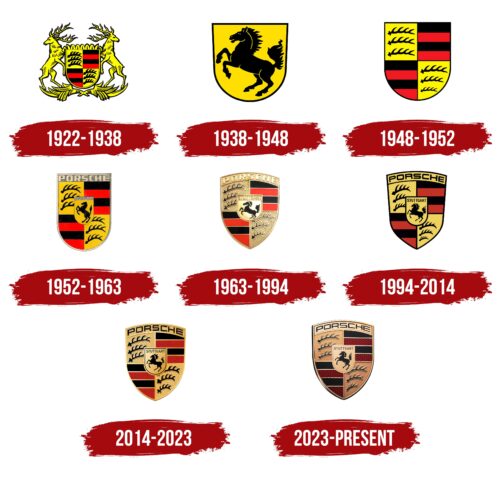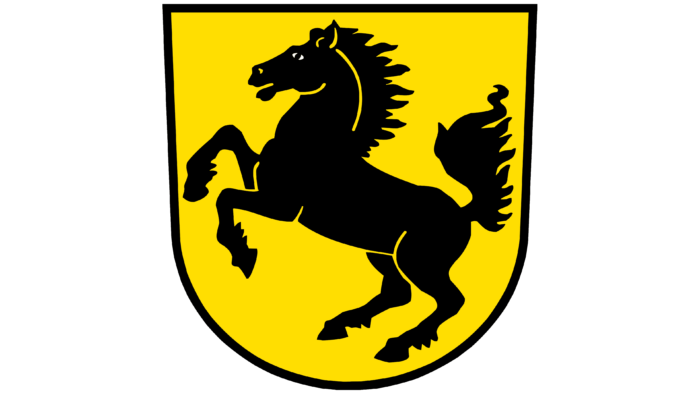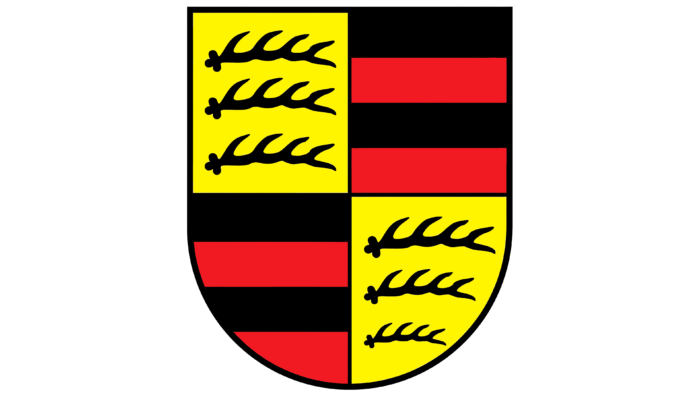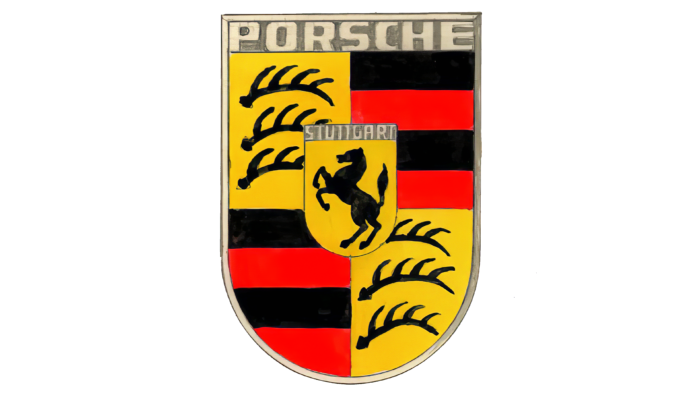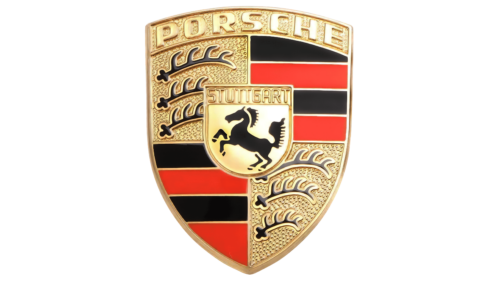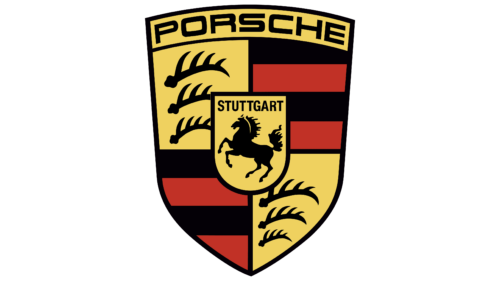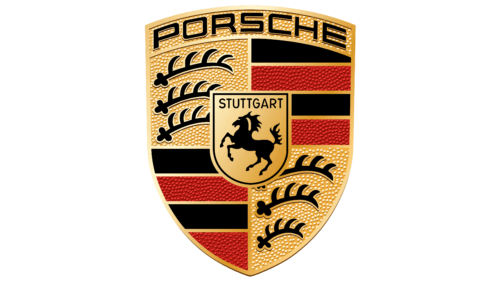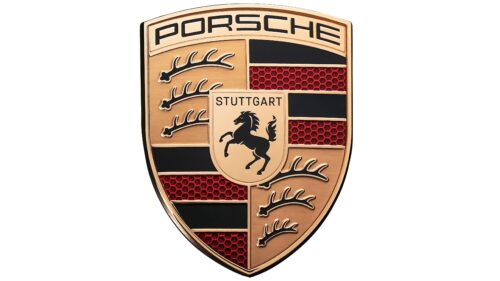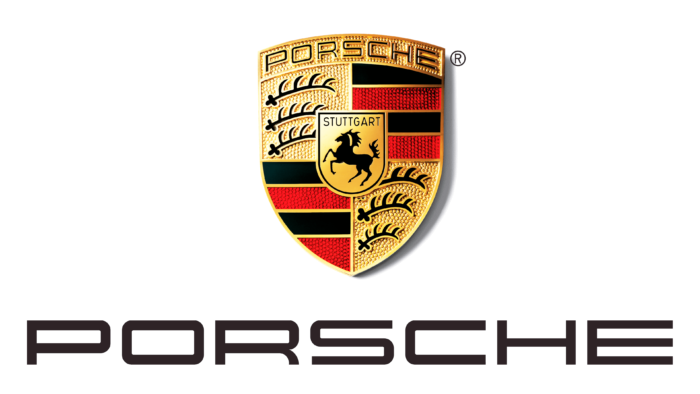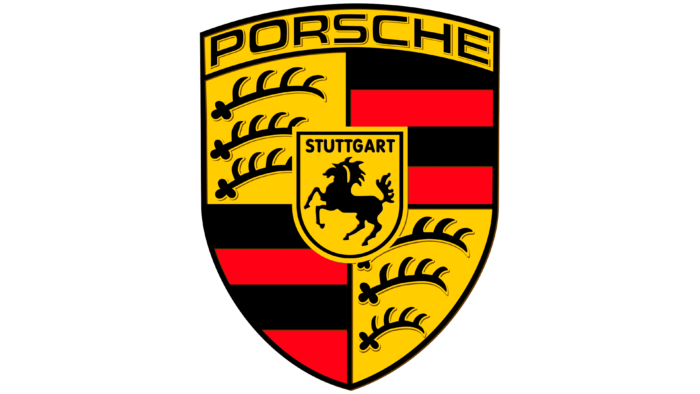Reliable and strong, as if forged from metal, cars are personified by the Porsche logo. Inside the cab, the driver is well-protected. The car will easily overcome any obstacles on the road. The emblem guarantees a quality assembly from the finest parts.
Porsche: Brand overview
Porsche is a famous German car brand. It was created in 1931 by the entrepreneur Ferdinand Porsche. The manufacturer’s head office is located in Stuttgart. Volkswagen AG currently owns the brand, which belongs to the Porsche Automobil Holding SE group, which owns a controlling stake.
The tale of the brand is a thrilling ride through decades of automotive brilliance, filled with innovation, racing glory, and legendary machines.
1931, Ferdinand Porsche set up his design office, Dr. Ing. h.c. F. Porsche GmbH, in Stuttgart, Germany. His early work involved designing vehicles for other companies. From 1934 to 1938, Porsche’s design genius led to the creation of the Volkswagen Beetle, a project commissioned by the German government.
The wartime years from 1939 to 1945 saw Porsche developing military hardware, including the formidable Tiger tank. In 1948, Ferdinand’s son, Ferry Porsche, took a pivotal step, crafting the first car to bear the brand name: the 356. Utilizing Volkswagen parts, this sports car signaled the brand’s debut in the automotive world.
The 1950s were transformative, with the 356 earning acclaim and racing success. The brand began producing its engines, marking the start of its journey as an independent manufacturer. The introduction of the iconic 911 in 1963 was a game-changer, establishing it as one of the most recognizable sports cars globally.
The 1960s and 1970s were golden eras in racing, with numerous victories, including the 24 Hours of Le Mans. The 917 and 956 models became motorsport legends. In 1972, the brand transitioned to a joint-stock company, reflecting its growing ambitions.
The 1980s saw an expanded model lineup with the 944 and 928, aiming to attract a broader audience. The early 1990s brought financial turbulence, but the brand’s fortunes revived with the successful launch of the Boxster in 1996. The SUV market beckoned in 2002, and the introduction of the Cayenne proved commercially successful, significantly boosting sales.
By 2009, after complex financial maneuvers, the brand joined the Volkswagen Group. The 2010s heralded innovation and a push towards electrification. The brand began offering hybrid models and ventured into fully electric vehicles. The release of the Taycan in 2019, the brand’s first all-electric car, marked a significant milestone.
The 2020s will continue to see the brand pioneering electric and hybrid vehicle development while maintaining its legacy of high-performance sports cars. Throughout its history, the brand has consistently blended cutting-edge technology with superb performance, adapting to market shifts while remaining true to its sporty roots and commitment to excellence.
Meaning and History
The Porsche emblem contrasts tradition and innovation. It represents the brand as exclusive, powerful, and stylish. The founder chose the historical heritage of the lands where the trademark appeared and made it a legendary sign.
The automaker used the coat of arms of the Free People’s State of Württemberg for a visual identity to better convey its roots since Stuttgart was a central city. The state coat of arms appeared in 1922 and contained two deer. Now, branched horns remind of them. Also, the local lands were famous for horse breeding, and the first factory appeared on the stable site, so a reared horse was flaunted on the logo. The coat of arms of Stuttgart with a black horse on a yellow background was adopted in 1938.
The original Porsche emblem was first introduced in the second half of 1952. It was located in the center of the steering wheel of the 356 Pre-A. The brand identity has remained the same from the moment of launch to the present. After all, it has everything that a car brand needs: grace, uniqueness, and brightness.
What is Porsche?
This is a German company that has become famous worldwide for its SUVs and luxury sports cars.
1922 – 1938
The original emblem shows two deer standing on their hind legs to the shield’s right and left. The animals look in opposite directions and lean on the central element. They have powerful horns in several branches, which speak of unsurpassed strength and the desire to fight for competition. These qualities are extremely important for Porsche because the company produces passenger and sports cars, where speed, endurance, and swiftness are valued.
The shield depicts black and red stripes echoing the flag and deer antlers’ colors—three in each of the two sectors. Wide lines occupy two more parts and are staggered. Both the shield and the deer are on sharp, elongated elements resembling fragments of horns.
1938 – 1948
On the logo of those years, a restive horse flaunts, rearing up. It is painted black and contrasts well with the yellow background. The heraldic shield is also taken as a basis. Inside, the animal’s figure is made of yellow–thin, barely noticeable lines that form the body’s contours. The mane flutters freely, and the tail is slightly trimmed on the right so it does not go beyond the frame.
1948 – 1952
The emblem is again represented by a heraldic shield but narrower than the previous version. He completely repeats the first version, which is almost identical to it. The only difference is the absence of double edging along the edge and the thinner antlers on the bright yellow segments. The remaining parts are traditionally occupied by alternating black and red stripes.
1952 – 1963
When Porsche first introduced its emblem, it combined the previous two symbols—the heraldic and horse shields. The designers tried to preserve the famous traditions and emphasize the historical roots. They used the authentic coats of arms of the Free People’s State of Württemberg and Stuttgart to do this. This is how the modern car logo appeared based on local heraldry.
The authors inserted one emblem into another, placing the sign with a horse in the center of an older coat of arms consisting of four fragments with six branched horns and eight stripes. An innovation was the upper inscriptions on the billboards: on the small one – “Stuttgart,” and on the large one – “Porsche.”
1963 – 1994
In 1963, the company introduced the 911 sports car, later named one of the most influential cars of the 20th century. Porsche refined its logo to resemble its modern version as closely as possible to mark the beginning of a new era in sports cars and celebrate its grand achievements in auto racing.
- The top band with the brand name was shaped into an arch, making the shield appear more streamlined and evoking a sense of speed.
- The bottom was given a sharp point, which required shortening the deer antlers. The sharp angle emphasizes the power and competitive spirit of the sports cars.
- The Stuttgart coat of arms in the center was flattened to make more room for other elements.
- Designers made the black horse more elegant by adding a flowing mane and separating some details with lines of different colors. This visual lightness highlights the company’s dynamism and the agility of its cars.
Yellow was replaced with gold, a prestige, luxury, and high-status symbol. It shines brightly, highlighting the engraved letters and creating a three-dimensional effect. This design makes the automaker’s name appear stylish and solemn, drawing attention to its products.
The logo appears convex because the central part has a light gradient, while the outer frame of the shield is painted in a dark shade. Some sections feature a textured surface with raised dots, creating a rough effect. This unique style is associated with the innovations and modern technologies that Porsche employs in car manufacturing.
1994 – 2014
After the redesign based on the previous logo, its modernized version appeared. It came in handy since the brand offered progressive products requiring a logo corresponding to the times and high technologies. The result of design searches was a shield narrowed at the bottom with 3D elements. Instead of yellow, gold appeared. The black horse has acquired graceful features. Burgundy ones replace the bright red stripes. The central shield has been trimmed as a thin black line. The upper part of the large shield is now arched.
2014 – 2023
The new Porsche logo exudes luxury and prestige, like the brand’s cars. Its refined design reflects innovation and a commitment to the highest quality, emphasized by clean lines and a harmonious color combination. The shield’s smooth shape, rounded top, and pointed bottom convey the brand’s dynamic spirit.
The creators achieved a three-dimensional effect by using various textures.
- The central part and contours are adorned with a gradient, evoking the metallic shine of luxury cars.
- The gold and red sections feature a rough surface formed by numerous raised dots.
- The black elements stand out due to their matte texture. Narrow outlines around the letters and deer antlers give them a three-dimensional appearance.
This style demonstrates the company’s focus on technological innovation and modern design, aiming to make its cars the best in their segment. The smooth shapes and contrasting colors evoke a sense of movement, reflecting the dynamism of Porsche sports cars. The horse depicted in the center, once the state symbol of Stuttgart, now represents unyielding energy.
2023 – today
While the historic emblem maintains its instant recognition, keen observers will notice a few subtle changes that add a contemporary flair to the timeless design.
One of the first changes you’ll notice is the expertly smoothed bronze knurling of the crest. This refined texture allows the iconic “PORSCHE” lettering to take center stage, proudly emblazoned across the top of the badge. The lettering maintains the distinctive font synonymous with the brand, exuding a sense of elegance and power.
As your eyes travel towards the center of the badge, you’ll be greeted by the city name “STUTTGART,” now written in bold black. This change serves as a nod to Porsche’s roots in the vibrant city of Stuttgart, Germany. The prominent display of “STUTTGART” reinforces the brand’s heritage and pays homage to where the Porsche legend was born.
The updated crest features red striping and a captivating honeycomb pattern reminiscent of a carbon-fiber weave. This pattern infuses the badge with a contemporary edge, reflecting Porsche’s commitment to innovation and cutting-edge technology. The juxtaposition of the classic red striping with the modern honeycomb pattern creates a harmonious blend of tradition and progress.
The updated Porsche crest badge represents the brand’s dedication to evolution while staying true to its iconic heritage. By carefully refining the design elements, Porsche has successfully balanced the past and the future. The updated badge captures the essence of the brand’s legacy, symbolizing performance, craftsmanship, and timeless elegance.
Porsche enthusiasts and automotive connoisseurs alike will appreciate the attention to detail and the thoughtful design choices that have gone into the updated crest badge. It is a visual testament to Porsche’s commitment to excellence and relentless pursuit of automotive perfection.
Porsche: Interesting Facts
Porsche, known for its high-performance sports cars, SUVs, and sedans, blends luxury with top-notch technology and engineering.
- Beginnings: Founded in 1931 by Ferdinand Porsche, the company started by designing cars like the Volkswagen Beetle, one of the most iconic cars ever, before making vehicles under its name.
- The First Porsche: The Porsche 356, launched in 1948, was the first car named Porsche. Made in an old sawmill in Austria, it introduced the rear-engine design typical for Porsche.
- Porsche 911: Since its debut in 1963, the Porsche 911 has become the brand’s most famous model. It is celebrated for its unique shape, rear engine, and performance. It continues to be a sports car standard.
- Racing Success: Porsche has won the 24 Hours of Le Mans more than any other brand, with over 19 victories since 1970. These wins showcase Porsche’s engineering skills and the reliability of its cars.
- Hybrid and Electric Cars: Porsche has been at the forefront of hybrid technology since the early 1900s with the Lohner-Porsche, the first hybrid car. Today, it leads with the 918 Spyder hybrid and the Taycan, its first all-electric sports car.
- The Porsche Crest: The brand’s logo, introduced in 1952, features a horse and antlers drawing from the coat of arms of Württemberg, Germany. It represents Porsche’s heritage and commitment to excellence.
- Family Influence: The Porsche and Piëch families, descendants of the founder, still significantly impact the company, with roles in the supervisory board and the larger Volkswagen Group.
- Consulting Services: Porsche also has a consulting arm that uses its automotive production expertise to help various industries become more efficient.
- Lifestyle and Design: Porsche Design, a subsidiary, offers luxury items like watches and eyewear that reflect the brand’s design and engineering values.
- Green Efforts: Porsche focuses on sustainability, working on electric vehicles, reducing emissions, and using renewable energy. The production of the Taycan is carbon-neutral, highlighting Porsche’s green commitment.
Porsche combines tradition, innovation, and unmatched performance, making it a worldwide choice for car enthusiasts and luxury shoppers.
Font and Colors
The developers used two heraldic symbols in the emblem so as not to lose authenticity at once. Moreover, there are two versions of its origin. According to one assumption, the author of the icon is the engineer Franz Xaver Reimspiess, and on the other, he is the owner of Ferdinand Porsche himself. He sketched the logo on a napkin, and then Erwin Komenda from the design department made the final drawing from the sketch. Both assumptions are considered official and are mentioned in various competent sources.
The text in the logo first appeared in 1952. These were two geographic indications that were critical to the automotive brand. The word “Stuttgart” was on the inside, “Porsche” was on the outside. They were executed grotesquely and placed in the upper register. The modern emblem uses a different typeface: “Stuttgart” is written in tightly grouped thin black letters, and “Porsche” is written in wide light letters with a free arrangement. The color scheme traditionally includes black, red, gold, or yellow.
FAQ
What animal is on the Porsche logo?
There is a prancing horse in the center of the Porsche logo. The deer is also partially present: its antlers are inside the shield.
Does Ferrari make Porsche?
The German brand Porsche is not related to the Italian company Ferrari. Porsche’s cars are produced in cooperation with Volkswagen Aktiengesellschaft.
What is the Porsche badge made of?
The base of the Porsche badge is a rectangular shield with a sharp base. The brand name is written at the top, and antlers and a pattern of red and black vertical stripes are shown below. In the center is a shield with the inscription STUTTGART and a prancing horse.
How many antlers are on the Porsche crest?
The Porsche Crest features six horns.

